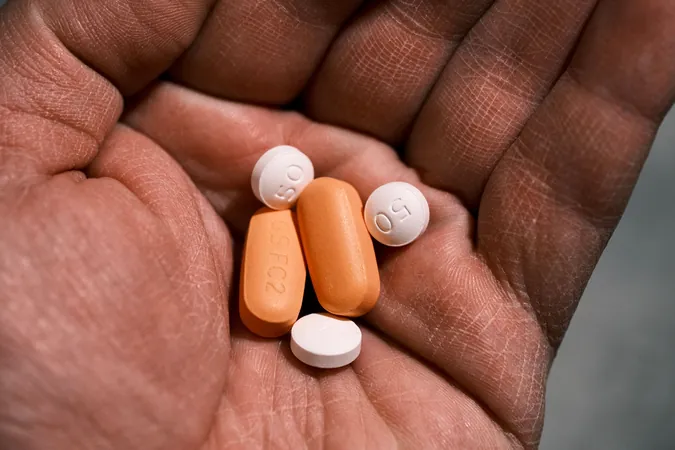
Groundbreaking Study Reveals Almost Zero Risk of HIV Transmission for Treated Individuals!
2025-01-24
Author: Siti
Groundbreaking Study Reveals Almost Zero Risk of HIV Transmission for Treated Individuals!
In a landmark meta-analysis recently published in Public Health, researchers have unveiled crucial evidence showing a remarkably low risk of HIV transmission among individuals receiving antiretroviral therapy (ART) in high-income countries. This finding could reshape public perception and policy regarding HIV transmission, emphasizing the effectiveness of ART in curbing the spread of the virus.
Since the approval of ART by the FDA in 1987, advancements in the treatment of HIV have transformed the lives of many individuals, allowing them to lead longer, healthier lives. Yet, the degree to which ART mitigates the risk of transmission has been a topic of much debate within the scientific community. The recent systematic review aimed to provide clarity by analyzing couples with differing HIV statuses, where one partner was undergoing ART.
The review encompassed six studies, primarily conducted in Europe and Australia, with a significant sample size of 2,383 couples representing 3,578 couple-years of data. Remarkably, among these studies, there were only 19 reported transmissions of HIV, none of which occurred from the HIV-positive partner receiving treatment. The overall risk estimate for HIV transmission was determined to be an astounding 0.00 per 100 couple-years.
Diving deeper, the research indicated that for heterosexual couples and men who have sex with men, the risk estimate remained at 0, underscoring ART's efficacy across various demographics. However, the study noted certain limitations, including the eligibility criteria which may not represent all individuals living with HIV. Most participants had maintained viral loads below 200 copies/mL, and some were found to have adherence rates as low as 60%.
Emma Grundtvig Gram, a co-author of the study, declared, “This new review supports the ‘treatment as prevention’ theory that HIV cannot be transmitted if the person is undergoing treatment.
Her comments bring attention to the potential normalization of sexual relationships between HIV-positive individuals on ART and their partners, suggesting that such connections can be considered safe.
The implications extend beyond just intimate relationships. The findings could lead to a reevaluation of policies related to blood donation from HIV-positive individuals under treatment, challenging existing stigmas surrounding the disease. As the authors boldly highlighted, reducing the institutional barriers faced by those living with HIV is paramount. “We encourage researchers, policymakers, and other relevant professionals to actively and continuously support these changes,” the authors urged.
As awareness and understanding of HIV continue to evolve, this study serves as a beacon of hope, promoting a future where HIV transmission is significantly minimized and where stigma against those living with HIV is dismantled. Could this be the turning point in how society perceives and treats individuals with HIV? The conversation is only just beginning!





 Brasil (PT)
Brasil (PT)
 Canada (EN)
Canada (EN)
 Chile (ES)
Chile (ES)
 Česko (CS)
Česko (CS)
 대한민국 (KO)
대한민국 (KO)
 España (ES)
España (ES)
 France (FR)
France (FR)
 Hong Kong (EN)
Hong Kong (EN)
 Italia (IT)
Italia (IT)
 日本 (JA)
日本 (JA)
 Magyarország (HU)
Magyarország (HU)
 Norge (NO)
Norge (NO)
 Polska (PL)
Polska (PL)
 Schweiz (DE)
Schweiz (DE)
 Singapore (EN)
Singapore (EN)
 Sverige (SV)
Sverige (SV)
 Suomi (FI)
Suomi (FI)
 Türkiye (TR)
Türkiye (TR)
 الإمارات العربية المتحدة (AR)
الإمارات العربية المتحدة (AR)